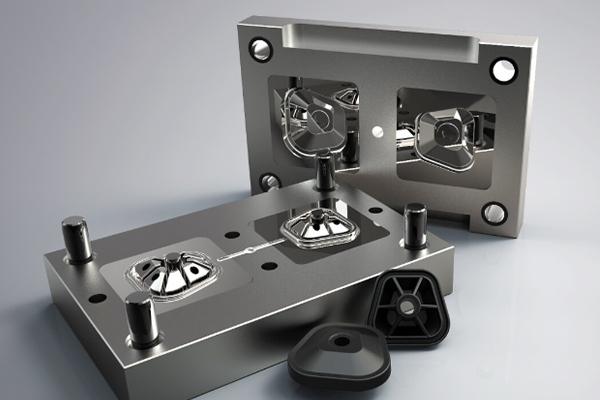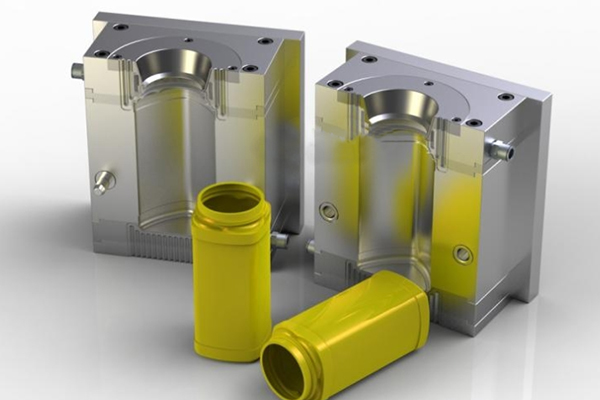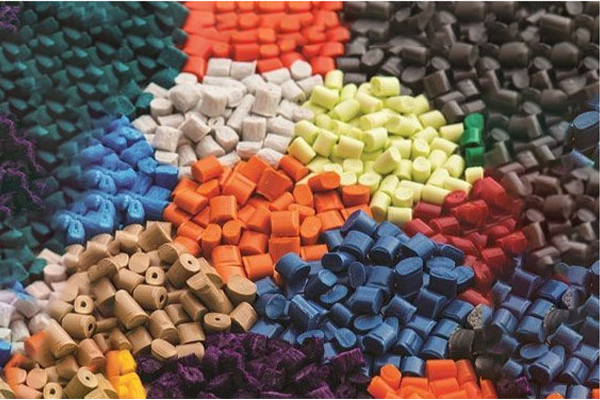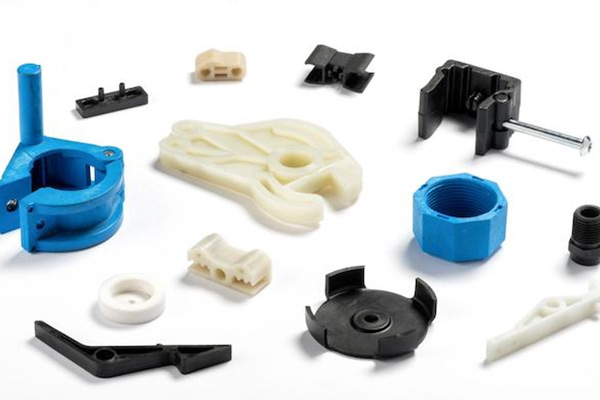Rapid Injection Molding – Low Volume Plastic Fabrication

What is Rapid Injection Molding?
Rapid injection molding is a manufacturing process that leverages advanced injection molding techniques and technology to quickly produce small to medium batches of plastic parts or components. It is designed to offer a swift and cost-effective solution for prototyping, low-volume production runs, and rapid iterations of product designs. Unlike traditional injection molding, rapid injection molding achieves rapid turnaround times by using aluminum or soft steel molds and simplified tooling designs. This approach significantly reduces lead times and eliminates the need for costly, long-lasting molds. It excels in design flexibility, enabling quick iterations and modifications, and is suitable for various industries, including automotive, aerospace, and electronics, where speed, cost-effectiveness, and quality are paramount.
If you’d like to learn more, check out our guide to plastic injection molding.

How Does Rapid Injection Molding Work?
To achieve success in rapid injection molding, it’s crucial to incorporate Design for Manufacturing (DFM) principles tailored to injection molding. A specialized rapid injection mold is created with a specific focus on cost-effectiveness and speed, employing readily available, standard materials. Typically, aluminum molds are preferred due to their ease of machining, although they aren’t suitable for high-volume production.
Once the customized rapid injection mold is fabricated, its two halves (core and cavity) are affixed to the stationary and moving plates of a standard injection molding machine, as the subsequent molding process remains consistent for both RIM and conventional injection molding. Hydraulic rams are employed to bring together and secure the mold halves.
The rapid injection molding process commences by introducing the raw material, typically thermoplastics and thermoset silicones, into a screw housed within a cylinder known as a barrel. A combination of external heaters on the barrel and frictional heat generated by the plastic pellets’ interaction with the screw melts the pellets. As soon as sufficient plastic is liquefied, the screw propels it into the mold via a nozzle, while a one-way valve on the screw prevents pressure from returning into the screw. High-pressure plastic fills the mold, with hydraulic rams ensuring no plastic escapes at the mold’s seam. After a brief solidification period, the mold opens, and the part is ejected using ejector pins. The screw retracts, and the process repeats.
It’s essential to note that rapid injection molding doesn’t produce individual parts any faster than standard injection molding.
Benefits of Using Rapid Injection Molding
-
- High Accuracy: Holds tolerances to +/-0.01.
- Surface Finish: A smooth finish is achievable in critical areas.
- Flexible Design Options: Complex geometries are supported, and designs don’t need to be restricted to straight-pull molds.
- Low-Volume Production: Rapid injection molding is ideal for producing parts or components in small to medium batches. Low-volume production runs can also be implemented for on-demand manufacturing.
- Competitive Costs: A highly economical option for prototyping, bridge production, or low-volume parts.
- Speed to Market: Rapid injection moulding significantly reduces the time it takes to go from design to finished product.
- Expert Support: Sungplastic includes Design for Manufacturability (DFM) analysis with every rapid injection molding project.
The Technology Behind Rapid Injection Molding
Rapid injection molding is driven by a combination of advanced machinery and innovative techniques that streamline the production process. These technological components collectively contribute to the speed and efficiency of the RIM process. Two key aspects of the technology behind rapid injection molding are the machinery and equipment used in the process and its synergy with 3D printing and CNC machining. Additionally, the synergy with 3D printing and CNC machining enables rapid prototyping and mold production, reducing lead times and costs while maintaining high levels of precision and quality in the manufacturing process.
Machinery and Equipment Used in Rapid Injection Molding
-
- Injection Molding Machines: RIM employs standard injection molding machines. These machines are equipped with features that enhance efficiency, including precise temperature control, automated injection processes, and the ability to handle high-speed production.
- Molds: While rapid injection molding process aims to reduce lead times, it still relies on molds to shape the plastic parts. The rapid tooling molds used in this process are often made from aluminum or soft steel, which are quicker and easier to machine compared to traditional hardened steel molds. This choice of mold material accelerates the overall production cycle.
- Cooling Systems: Efficient cooling systems are integrated into the molds to expedite the solidification of the molten plastic. Precise temperature control within the mold and cooling channels ensures that parts can be ejected more quickly, reducing cycle times.
- Quality Control Systems: Automated quality control measures are implemented to monitor and maintain consistent part quality. These systems track variables such as pressure, temperature, and cycle time in real time to ensure that each part meets the specified design requirements.
Synergy with 3D Printing and CNC Machining
-
- 3D Printing: Rapid injection molding can be combined with 3D printing technology to create prototype molds quickly and cost-effectively. This hybrid approach leverages the speed of 3D printing to produce molds for injection molding. It’s particularly useful for low-volume production runs and design validation. 3D printing allows for the rapid iteration of mold designs, reducing the lead time associated with traditional mold fabrication methods.
- CNC Machining: CNC (Computer Numerical Control) machining plays a pivotal role in the rapid injection molding process. It is used to create molds with precision and speed. CNC machines are capable of accurately carving complex precision mold shapes out of materials like aluminum or soft steel. The high-speed machining capabilities of modern CNC machines ensure that mold production is expedited without compromising quality.
Rapid Injection Molding Tools
There are many types of rapid injection molding tools, each with its own unique characteristics. Tool selection must be based on your specific project requirements, including throughput, part complexity, budget, and desired lead time, and should be consistent with the goals of the manufacturing project. The following is an analysis of several types of rapid prototyping molds and their respective advantages.
Aluminum Molds
Aluminum molds are widely used in rapid injection molding due to their excellent thermal conductivity and relatively low cost compared to steel molds.
Advantages:
-
- They offer faster cooling times, which reduces cycle times and speeds up production.
- Aluminum molds are suitable for small to medium production runs and prototyping due to their durability and cost-effectiveness.
Vacuum Molds (Silicone Rubber Molds)
Vacuum molds, also known as silicone rubber molds, are a versatile option. They are typically made by creating a master pattern and then pouring silicone rubber around it.
Advantages:
-
- Vacuum molds are excellent for producing intricate, complex parts with undercuts or fine details.
- They are ideal for low-volume production and rapid prototyping.
Resin Molds (Epoxy Tooling)
Resin molds, often made from epoxy tooling boards or similar materials, are a cost-effective option for rapid tooling.
Advantages:
-
- They are relatively quick to produce and can be used for prototyping or low-volume production.
- Resin molds are suitable for parts with less demanding requirements in terms of precision and durability.
Soft Molds (Soft Steel Molds)
Soft molds, sometimes made from softer steel materials, are optimized for faster machining and shorter lead times.
Advantages:
-
- Soft molds are suitable for low to medium production volumes and prototyping.
- While they may have a shorter lifespan compared to hardened steel molds, they offer faster mold creation and reduced costs.
Rapid Injection Molding VS Traditional Injection Molding Method
Rapid injection molding and traditional injection molding are two distinct approaches to producing plastic parts, each with its own set of advantages and limitations. RIM is best suited for scenarios where speed, flexibility, and lower volume production are critical. Traditional injection molding is preferred for large production volumes, parts with intricate designs, and situations where long-term tooling durability is necessary. Sungplastic will select the appropriate processing technology based on the specific requirements of your project. We’ll ensure the technology chosen meets your project goals, budget and production requirements.
Here’s a comparison between the two methods:
Rapid Injection Molding
-
- Speed: RIM lives up to its name, offering significantly faster production times. It achieves this speed by simplifying the mold design, using materials like aluminum, and employing efficient cooling systems.
- Design Flexibility: RIM allows for quick and cost-effective design iterations. This flexibility is crucial for refining product designs and responding to changes or improvements swiftly.
- Low-Volume Production: It is ideal for low to medium production runs and prototyping, catering to niche markets or situations where large quantities are not needed.
Traditional Injection Molding Method
-
- Precision and Consistency: Traditional injection molding is known for its precision and consistency, making it the preferred choice for high-volume production of complex and critical parts.
- Large Production Runs: It excels in large-scale manufacturing where the initial tooling costs are spread out over a high number of parts. It is the go-to method for mass production.
- Tooling Durability: Traditional molds are typically made from hardened steel and can endure long production runs, providing a high return on investment over time.
- Lead Times: The tooling creation process for traditional injection molding is time-consuming, which can result in longer lead times from design to production.
- Limited Design Flexibility: Design changes can be costly and time-consuming with traditional injection molding due to the complexity of the tooling.
What Materials Are Used for Rapid Injection Molding?
Selecting the most suitable material for rapid injection molding hinges on the intended application of the product. RIM serves purposes such as prototyping, pilot production, and short-run volumes, effectively bridging the transition from design to full-scale manufacturing. Consequently, the materials utilized must align with those intended for large-scale production. An inherent advantage of RIM lies in its capacity to evaluate multiple materials to identify the optimal choice. When determining the most appropriate material, several critical factors come into play, including cost, mechanical strength, resistance to UV radiation, electrical characteristics, and thermal endurance. The incorporation of additives, such as glass or carbon fibers, can enhance these properties. However, it is essential to acknowledge that these types of fibers can be highly abrasive and may reduce the overall lifespan of the mold, particularly in the case of aluminum molds. Here are some common materials used in rapid injection molding:
Thermoplastics:
-
- Acrylonitrile Butadiene Styrene (ABS): Widely used for its excellent impact resistance and versatility. Applications include consumer goods, automotive components, and electronics.
- Polypropylene (PP): Known for its chemical resistance and lightweight nature. It’s used in packaging, automotive parts, and medical devices.
- Polycarbonate (PC): Offers high impact resistance and optical clarity. Commonly used in automotive lighting, electronics, and medical devices.
- Polyethylene (PE): Available in various forms (e.g., HDPE, LDPE) and used in applications ranging from packaging and containers to pipes and toys.
- Polyethylene Terephthalate (PET): Known for its clarity and strength, often used in the production of bottles, containers, and food packaging.
- Nylon: Resistant to wear and abrasion, nylon is suitable for applications such as gears, bearings, and mechanical components.
Thermosetting Plastics:
-
- Epoxy: Offers excellent electrical insulation and chemical resistance. Common applications include electronic encapsulation and composite materials.
- Phenolic: Known for its heat resistance and mechanical strength. Used in electrical components, automotive parts, and consumer goods.
- Silicone Rubber: Silicone rubber materials are commonly used in rapid injection molding for parts requiring flexibility, durability, and heat resistance. Applications include gaskets, seals, and medical components.
- Liquid Silicone Rubber (LSR): LSR materials are ideal for producing parts that require biocompatibility, high heat resistance, and flexibility. They are widely used in medical and healthcare products, automotive components, and consumer electronics.
- Polyurethane (PU): Polyurethane materials are used when parts require high flexibility, impact resistance, and durability. They find applications in automotive components, footwear, and industrial equipment.
- Polyvinyl Chloride (PVC): PVC is known for its chemical resistance and versatility. It’s used in a wide range of applications, including pipes, cable insulation, and consumer goods.
- Polymethyl Methacrylate (PMMA): PMMA offers excellent optical clarity and is commonly used for applications such as transparent displays, lenses, and light covers.

Applications of Rapid Injection Molding
The versatility of rapid injection molding makes it a valuable tool for a wide range of industries, enabling accelerated product development, cost-effective low-volume production, and rapid design iteration. Its applications continue to expand as technology and materials advance.
-
- Prototyping: Creating functional prototypes for design validation and testing.
- Low-Volume Production: Cost-effective manufacturing of small to medium production runs.
- Customization: Tailoring products to specific customer needs.
- Consumer Goods: Producing parts for electronics, appliances, toys, and more.
- Medical Devices: Manufacturing components for surgical instruments and devices.
- Automotive: Designing and producing automotive components and prototypes.
- Aerospace: Creating lightweight, precision parts for aircraft.
- Electronics: Making casings, connectors, and components for electronic devices.
- Industrial Equipment: Customizing machinery and equipment components.
- Packaging: Prototyping and small-scale production of packaging components.

Rapidly Manufacture Your Customized Products
Rapid injection molding technology makes full use of advanced machinery and materials to manufacture high-quality, complex plastic parts at record speeds. This process is specifically designed to produce relatively small batches of plastic parts, resulting in significantly shorter production cycles compared to standard injection molding. The high-precision characteristics of this process ensure design consistency, product integrity and reliability.
Sungplastic is an experienced injection molding manufacturer that provides a full range of services from prototyping to low-volume production. Our team of professionals and cutting-edge technology manufacture plastic and rubber products quickly, cost-effectively and with high quality, quickly turning your unique ideas into reality.
Get a free quote and design analysis today.
We’ll reply to you within 6 working hours.
We respect your privacy.
+86 139 2927 4777 (WhatsApp, Wechat)
